A small ball attached with one end of an inextensible thread is moving in a vertical circle. Ratio of its maximum to minimum velocity is .
Calculate tension in thread and acceleration of the ball at the moment when velocity of the ball is directed vertically downward. .
Let a ball of mass m be moving in a vertical circle of radius r, as shown in figure. Velocity of the ball is minimum when ball passes through highest point A and maximum when it passes through the lowest point C.
Let velocity of ball at A be then that at C will be equal to .
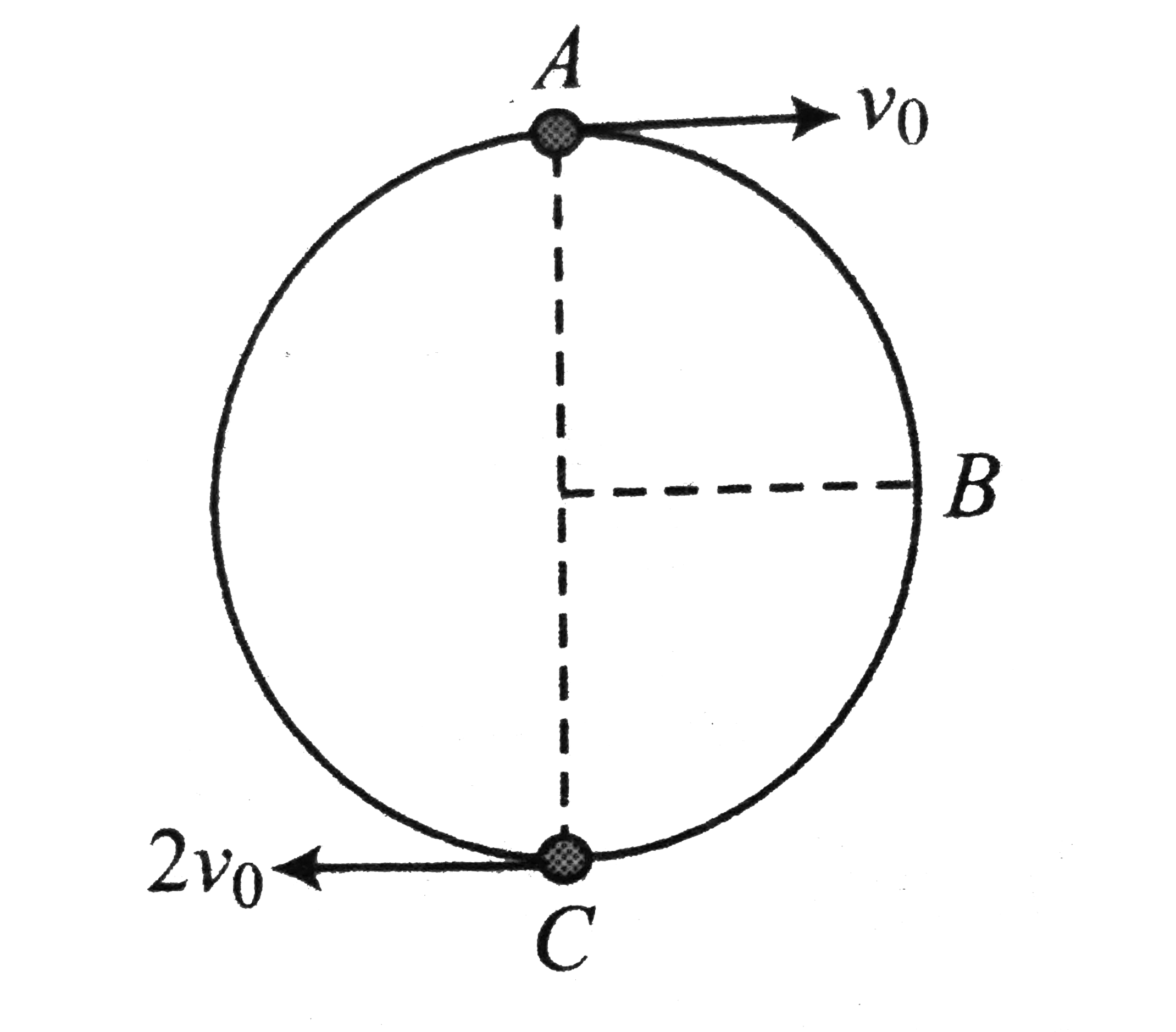
According to law of conservation of energy.
KE at C=KE at A + Loss of energy from A to C
Velocity of the ball is directed vertically downward when the ball passes through B. Let velocity at this point be v. Then according to law of conservation of energy.
KE at B=KE at A+Loss of energy from A to B
Now considering FBD at B,
or tangential acceleration,
normal or centripetal acceleration.
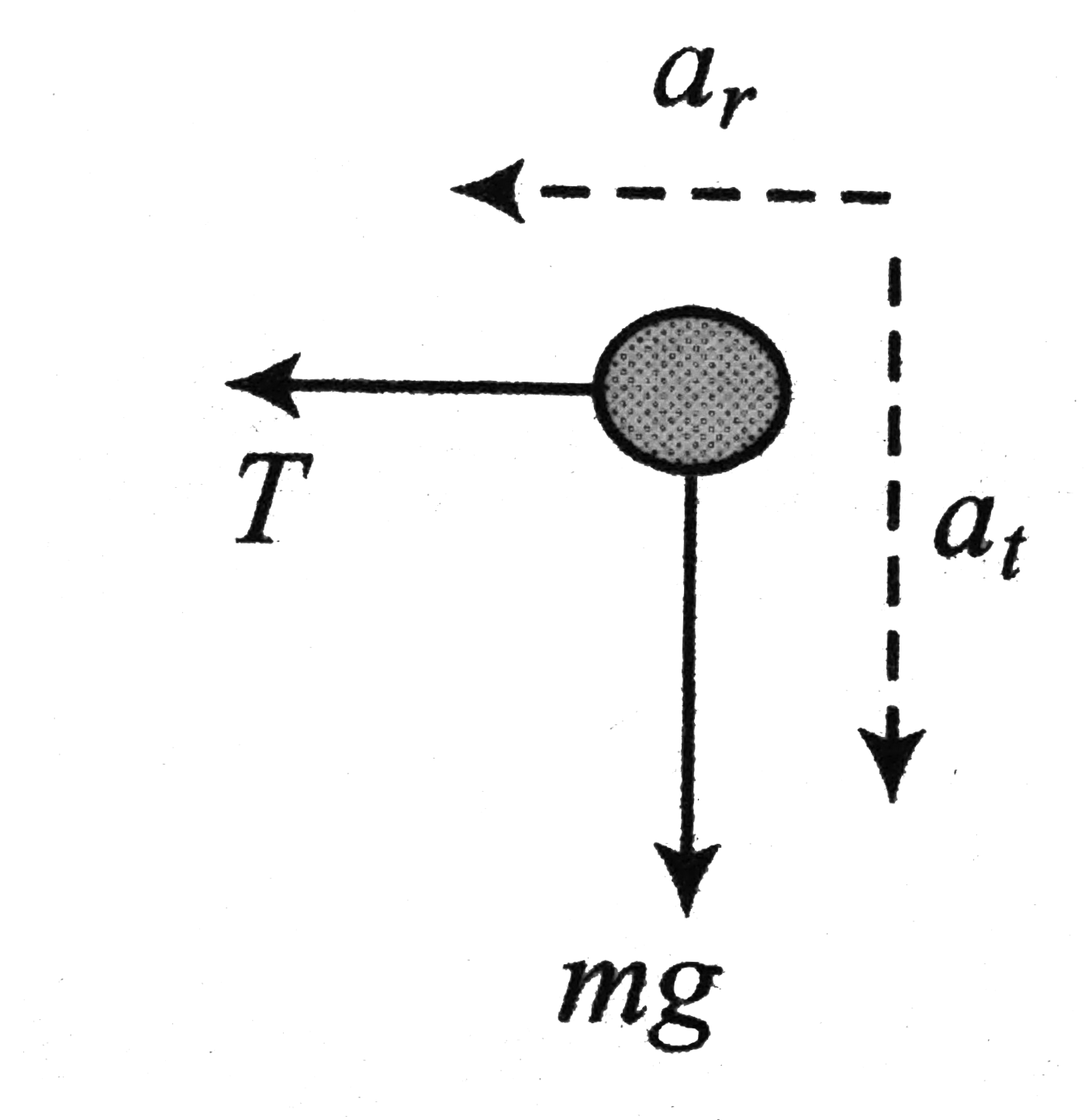
Net acceleration at ball of B will be equal to the vector sum of these two . ltbr>
Topper's Solved these Questions
Similar Questions
Pendulum bob of mass m connected to a string of length l is made to whirl around in a vertical circle . Maximum speed of bob is found to be double of the minimum speed . Calculate tension in the thread when velocity of the bob is directed vertically downward .
View SolutionA small bob tied at one end of a thin string of length 1m is describing a vertical circle so that the maximum and minimum tension in the string are in the ratio 5: 1. The velocity of the bob at the height position is ____ m/s. (Take g=10m/s2)
View Solution
Knowledge Check
- Question 1 - Select One
A small particle of mass m attached with a light inextensible thread of length L is moving in a verical circle. In the given case particle is moving in complete vertical circle and ratio of its maximum to minimum velocity is 2:1 .
Velocity of the particle when it is moving certically downward is
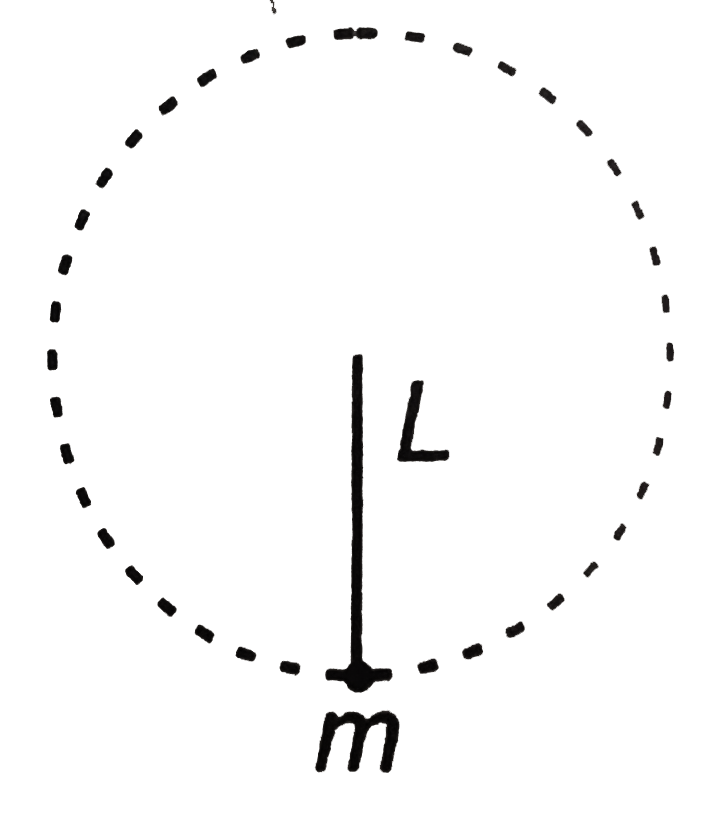 A√10gL3B2√gL3C√8gL3D√13gL3
A√10gL3B2√gL3C√8gL3D√13gL3 - Question 2 - Select One
A small particle of mass m attached with a light inextensible thread of length L is moving in a verical circle. In the given case particle is moving in complete vertical circle and ratio of its maximum to minimum velocity is 2:1 .
Minimum velocity of the particle is
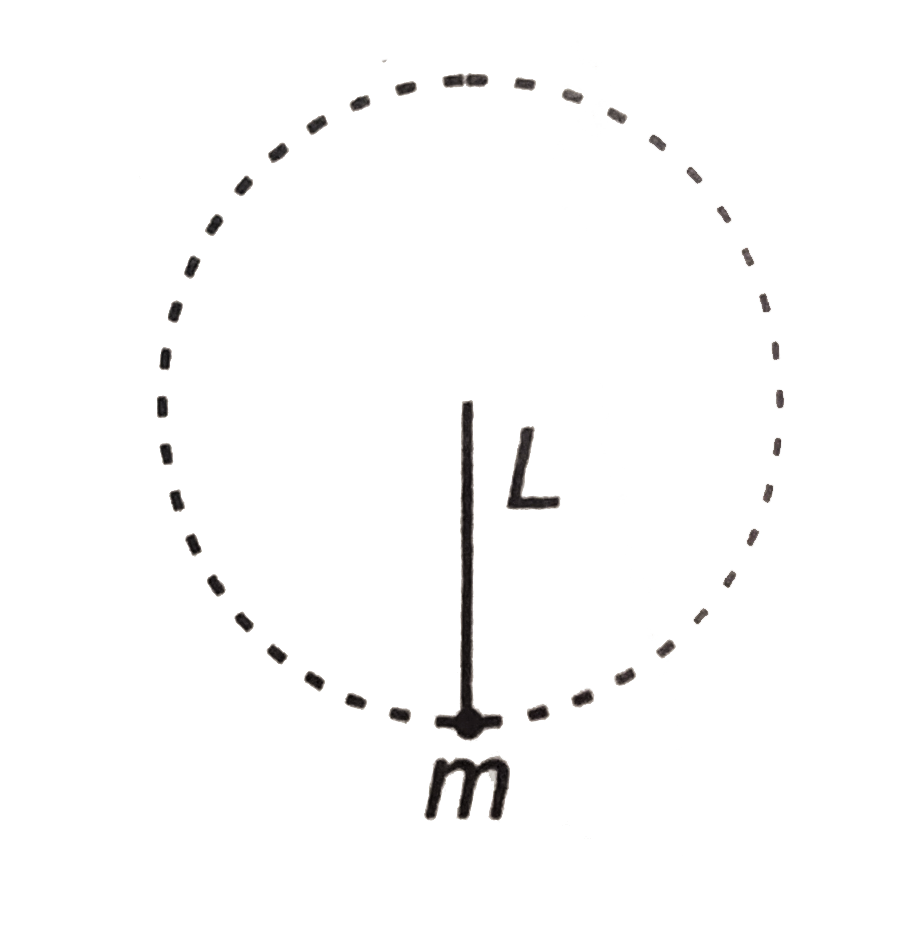 A4√gL3B2√gL3C√gL3D3√gL3
A4√gL3B2√gL3C√gL3D3√gL3 - Question 3 - Select One
A small particle of mass m attached with a light inextensible thread of length L is moving in a vertical circle. In the given case particle is moving in complete vertical circle and ratio of its maximum to minimum velocity is 2:1 .
Kinetic energy of the particle at the lower most position is
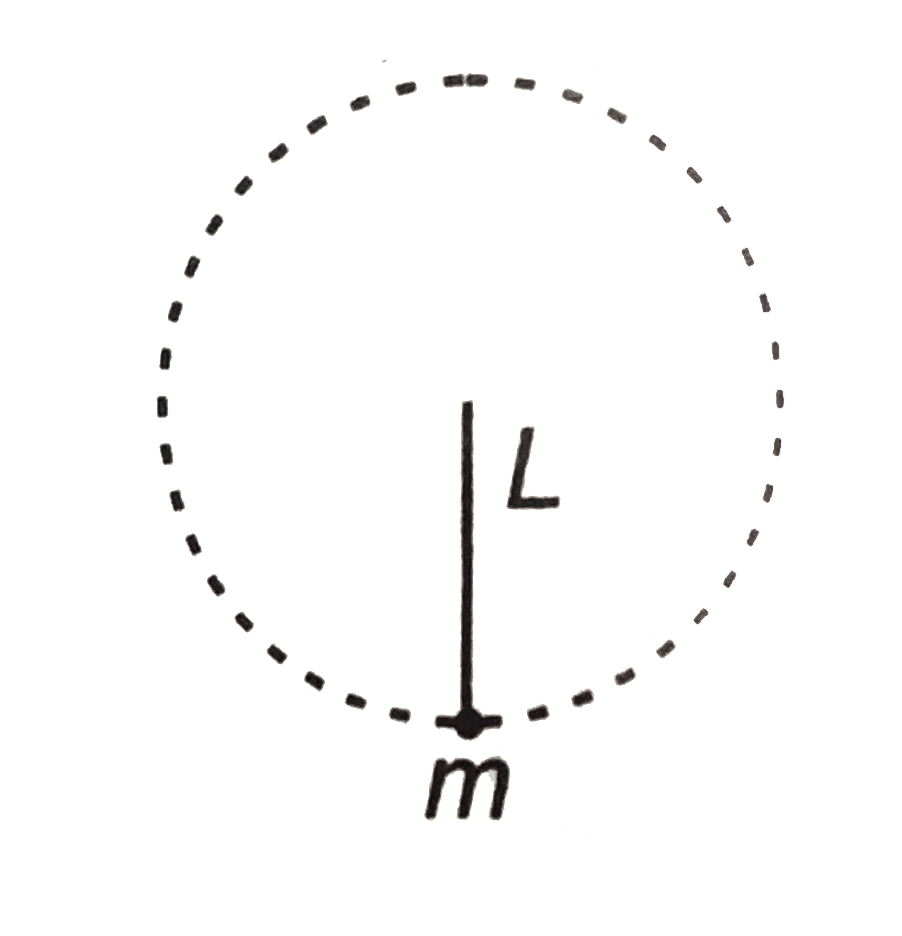 A4mgL3B2mgLC8mgL3D2mgL3
A4mgL3B2mgLC8mgL3D2mgL3
A small sphere of mass m suspended by a thread is first taken aside so that the thread forms the right angle with the vertical and then released. Find:
(a) the total acceleration of the sphere and the thread tension as a function of θ, the angle of deflection of the thread from the vertical,
(b) the thread tension at the moment when the vertical component of the sphere's velocity is maximum,
(c) the angle θ between the thread and the vertical at the moment when the total acceleration vector of the sphere is directed horizontally.View Solution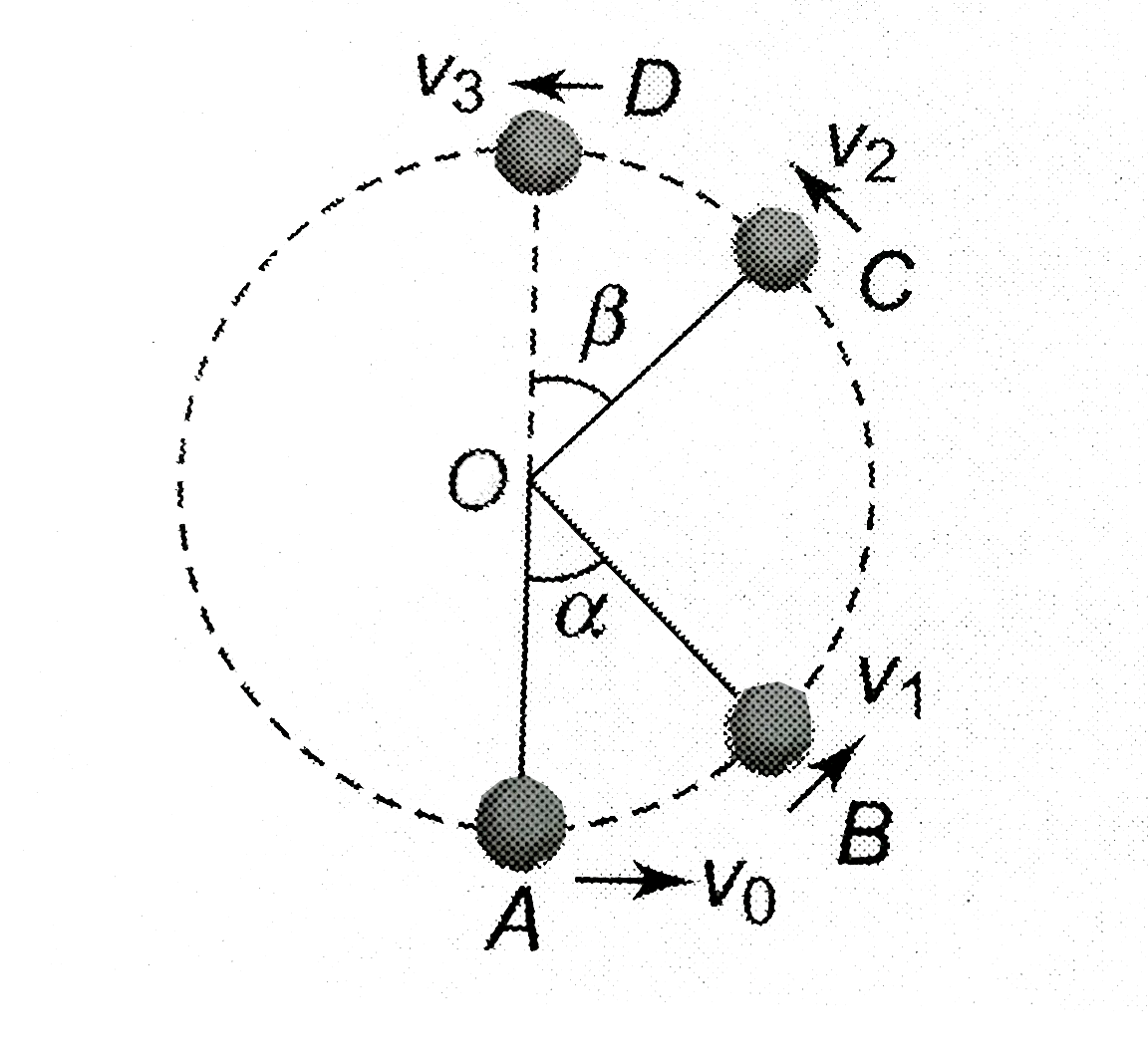
A ball is attached to a string of length L and the ball is given velocity v0 at its lowest point. Find the speed of the ball at point B,C and D. Assume that the ball is moving in vertical circle.View SolutionIf a ball is thrown vertically upwards with a velocity of 40m/s, then velocity of the ball after 2s will be (g=10m/s2)
View SolutionAssertion A ball tied by thread is undergoing circular motion (of radius R) in a vertical plane. (Thread always remains in vertical plane). The difference of maximum and minimum tension in thread is independent of speed (u) of ball at the lowest position (u>√5gR).
Reason For a ball of mass m tied by thread undergoing vertical circular motion (of radius R), difference in maximum and minimum magnitude of centripetal aceleraion of the ball is independent of speed (u) of ball at the lowest position (ugr√5gR)).View SolutionA ball of mass m is attached to one end of a light rod of length l, the other end of which is hinged. What minimum velocity v should be imparted to the ball downwards, so that it can complete the circle ?
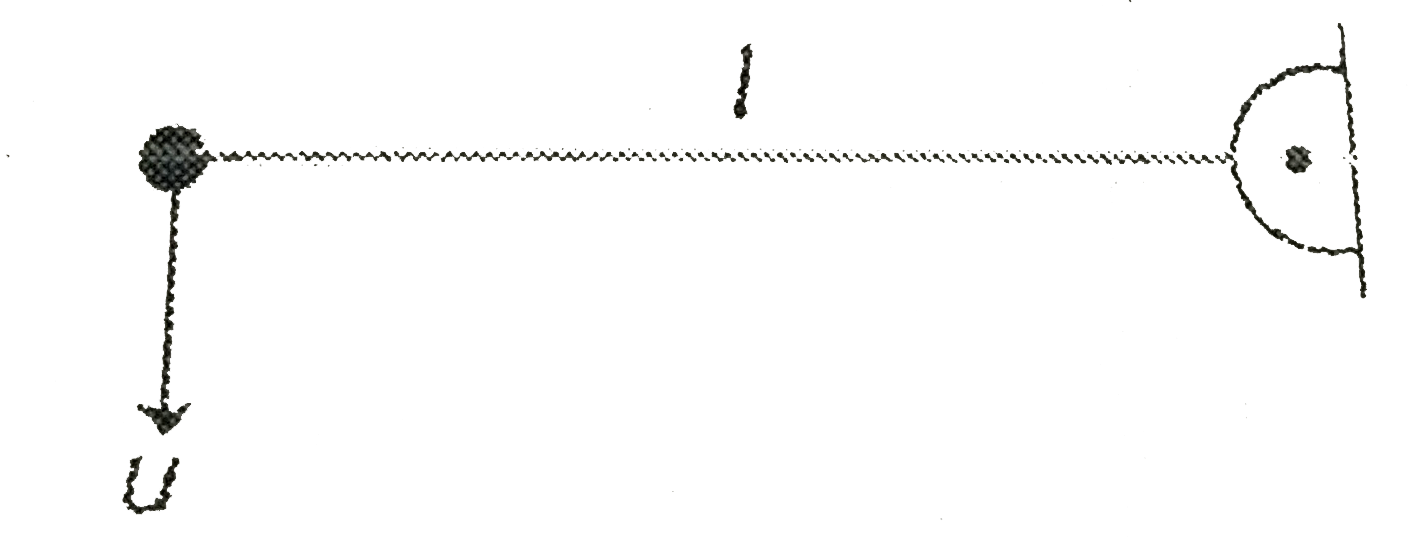 View Solution
View Solution

